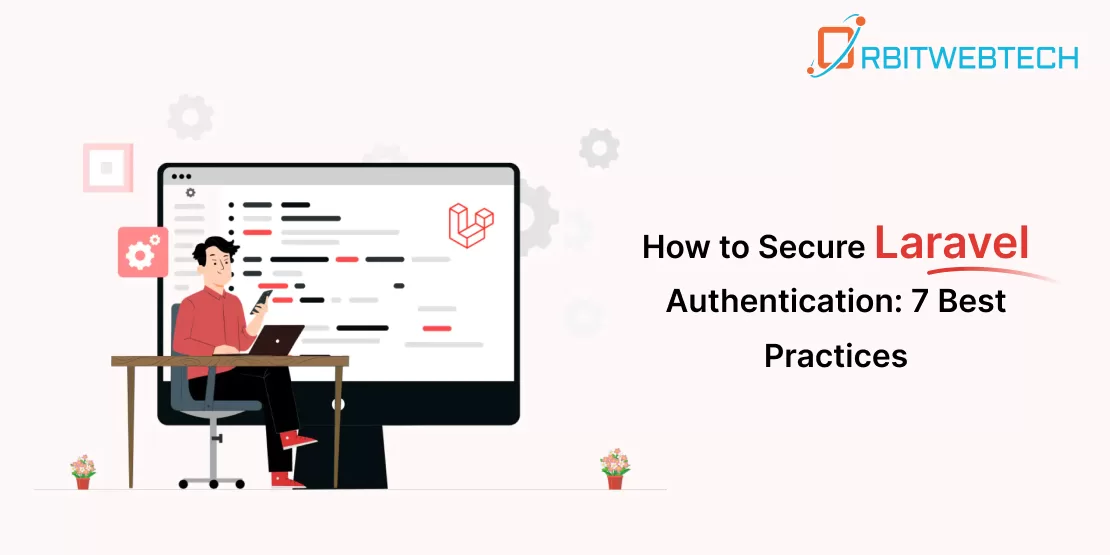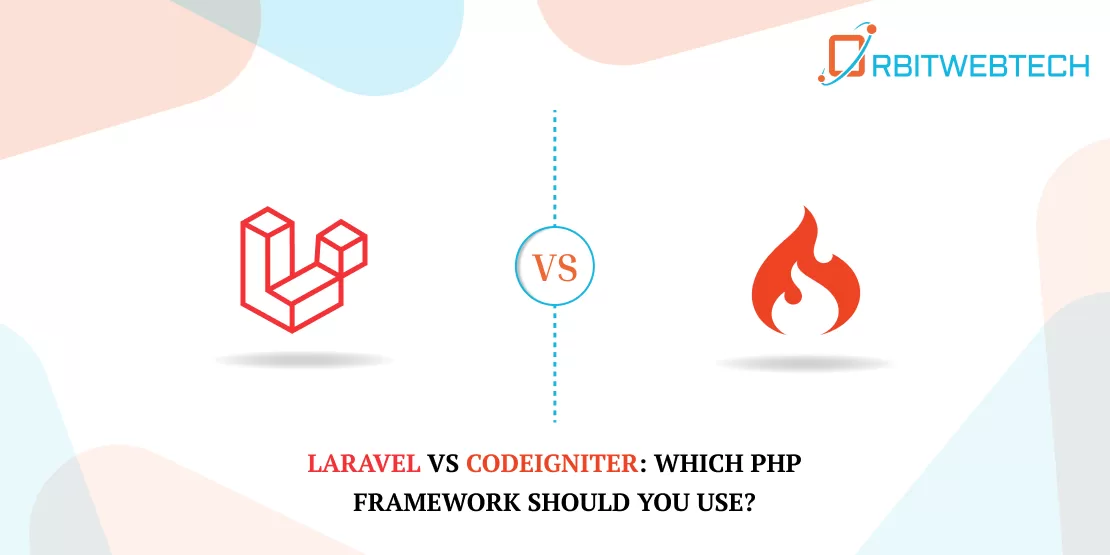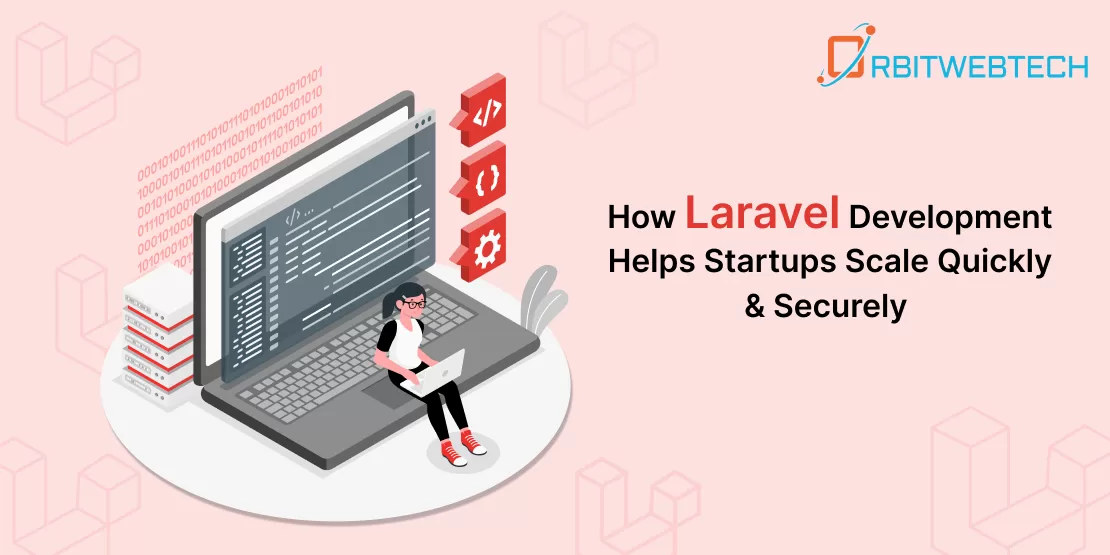
Security is a critical component of any Laravel-based application, particularly when handling user authentication. A poorly secured authentication system can lead to data breaches, credential theft, and unauthorized access, making it imperative to follow best security practices to protect your application.
Hire Laravel developers who understand modern security threats and can implement robust authentication mechanisms to safeguard user data. This article covers seven essential security practices that will help secure Laravel authentication effectively.
1. Enforce Multi-Factor Authentication (MFA) for Stronger Security
Why is MFA Important?
Multi-Factor Authentication (MFA) adds an extra security layer beyond passwords, reducing the risk of unauthorized access even if passwords are compromised. Laravel supports MFA using Laravel Fortify and Laravel Jetstream.
How to Implement MFA in Laravel?
1. Install Laravel Jetstream (Supports Two-Factor Authentication by Default)
composer require laravel/jetstream
php artisan jetstream: install livewire2. Enable Two-Factor Authentication (2FA) in Laravel Fortify
Features::twoFactorAuthentication([
'confirmPassword' => true,
]);3. Allow Users to Register Their Authenticator App
Laravel generates a QR code for users to scan using Google Authenticator or Authy, providing an extra layer of security.
2. Use Secure Password Hashing Techniques
Why Password Hashing is Essential?
Storing passwords in plaintext is a severe security risk. Laravel automatically hashes passwords using bcrypt, ensuring they cannot be reversed.
Best Practices for Password Security in Laravel
- Use bcrypt (default in Laravel) or Argon2 for hashing passwords.
- Enforce strong password policies (minimum 12 characters, mix of letters, numbers, symbols).
- Regularly rehash passwords to stay up-to-date with security standards:
if (Hash:: needsRehash($user->password)) {
$user->password Hash::make($password);
}3. Prevent Brute Force Attacks with Rate Limiting
Why is Rate Limiting Important?
Brute force attacks attempt multiple login attempts to guess passwords. Laravel includes built-in rate limiting to block repeated login attempts.
How to Set Up Rate Limiting in Laravel?
Modify LoginController to limit login attempts:
use Illuminate\Support\Facades\RateLimiter;
public function login(Request $request)
{
$this->validateLogin($request);
if (RateLimiter::tooManyAttempts($this->throttleKey($request), 5)) {
return response()->json(['message' => 'Too many login attempts. Try again later.'], 429);
}
RateLimiter::hit($this->throttleKey($request), 60);
}
4. Protect Against CSRF Attacks (Cross-Site Request Forgery)
Why CSRF Protection is Essential?
CSRF attacks trick authenticated users into submitting malicious requests on behalf of attackers. Laravel automatically protects against CSRF using tokens.
How to Enable CSRF Protection?
- Include the CSRF token in forms:
<form method="POST" action="/secure-endpoint">
@csrf
<button type="submit">Submit</button>
</form>- Add CSRF middleware to routes
Route::middleware('csrf')->group(function () {
Route::post('/secure-action', [SecureController::class, 'handle']);
});5. Secure Laravel Sessions to Prevent Hijacking
Why is Secure Session Handling Important?
If an attacker steals a user’s session, they can impersonate the user. Protecting Laravel sessions prevents session fixation and hijacking attacks.
Best Practices for Laravel Session Security
- Regenerate session IDs after login:
Session: :regenerate(); - Store sessions in the database or Redis instead of files
Update .env file:
SESSION_DRIVER-database- Enable Secure and HTTP-Only Cookies:
'secure' => env('SESSION_SECURE_COOKIE', true),
'http_only' => true,6. Implement Role-Based Access Control (RBAC)
Why RBAC is Essential?
Not every user should have admin access. Role-Based Access Control (RBAC) ensures users can access only what they need.
How to Implement RBAC in Laravel?
1. Install Spatie Laravel Permissions Package
composer require spatie/laravel-permission2. Define Roles & Permissions
use Spatie\Permission\Models\Role;
use Spatie\Permission\Models\Permission;
$admin = Role: :create(['name' => 'admin']);
$user = Role: :create(['name 'user']);
$admin->givePermissionTo('edit users');3. Use Middleware for Role-Based Access
Route::middleware(['role:admin'])->group(function () {
Route::get('/admin', [AdminController::class, 'dashboard']);
});7. Secure API Authentication with Laravel Sanctum
Why API Security Matters?
For API-driven applications, token-based authentication ensures secure access control. Laravel Sanctum simplifies API authentication.
How to Secure API Authentication?
1. Install Laravel Sanctum
composer require laravel/sanctum
php artisan vendor: publish --provider="Laravel\Sanctum\SanctumServiceProvider"
php artisan migrate2. Configure API Middleware
use Laravel Sanctum\HasApiTokens;
class User extends Authenticatable
{
use HasApiTokens, Notifiable;
}3. Generate API Tokens for Users
$token = $user->createToken('auth-token')->plainTextTokenConclusion
Securing Laravel authentication is crucial to protect user data and prevent unauthorized access. By implementing best practices such as MFA, password hashing, rate limiting, CSRF protection, and session security, you can build a more resilient authentication system that safeguards against common cyber threats.
Additionally, role-based access control (RBAC) and secure API authentication with Laravel Sanctum further enhance security by restricting unauthorized actions and ensuring safe communication between users and APIs. Regular updates and monitoring are essential to keep up with evolving security challenges.
For expert assistance in building secure Laravel applications, trust Orbitwebtech, the best web development company that specializes in Laravel security and authentication solutions to help safeguard your digital assets.

